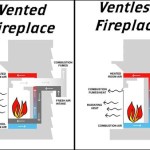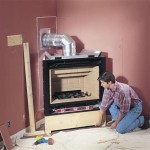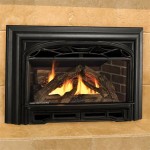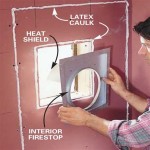Open Fireplace Inserts: Enhancing Efficiency and Aesthetics
Open fireplaces, while aesthetically pleasing, are notoriously inefficient heating sources. A significant portion of the heat generated escapes up the chimney, resulting in minimal warmth distributed to the room and increased energy consumption. Open fireplace inserts offer a solution by transforming an existing open fireplace into a more efficient and controllable heating appliance. These inserts are designed to fit within the firebox of an existing fireplace, providing a closed combustion system that significantly reduces heat loss and improves heating performance.
An open fireplace often drafts warm air out of the room and up the chimney. This is because the fire requires a large amount of air to burn, and it draws this air from the surrounding space. This creates a negative pressure environment, pulling in cold air from around doors, windows, and other openings to replace the exhausted warm air. This process effectively cools the room, negating much of the heat produced by the fire itself. The efficiency of an open fireplace is typically in the range of 5-10%, meaning that only a small fraction of the fuel's energy is actually used to heat the room.
An open fireplace insert, in contrast, operates as a closed system. Combustion air is often drawn from outside the home, either directly through a dedicated intake or indirectly through a tightly sealed firebox. This eliminates or significantly reduces the draft that pulls warm air out of the room. Furthermore, the insert's closed design allows for more complete combustion, extracting more energy from the fuel and reducing emissions. The efficiency of an insert can range from 60-80%, depending on the model and fuel type. This represents a substantial improvement over the efficiency of an open fireplace, leading to lower heating costs and a more comfortable living environment.
Improved Heating Efficiency and Reduced Energy Consumption
The primary benefit of installing an open fireplace insert is the significant improvement in heating efficiency. As previously discussed, open fireplaces are inherently inefficient, with a substantial portion of the heat generated lost up the chimney. Fireplace inserts, on the other hand, are designed to maximize heat output and minimize heat loss. They achieve this through a combination of features, including a closed combustion system, efficient heat exchangers, and insulated fireboxes.
The closed combustion system ensures that air is supplied to the fire in a controlled manner, promoting more complete combustion and reducing the amount of unburned fuel that escapes as smoke. Efficient heat exchangers, often constructed of cast iron or steel, transfer heat from the fire to the surrounding air, which is then circulated into the room. Insulated fireboxes further reduce heat loss by preventing heat from radiating into the surrounding masonry, directing it instead into the room.
The increased efficiency of a fireplace insert translates directly into reduced energy consumption. By using less fuel to generate the same amount of heat, homeowners can significantly lower their heating bills. This is particularly beneficial for homeowners who rely heavily on their fireplace as a primary or supplemental heating source. The exact amount of energy savings will vary depending on factors such as the size of the fireplace, the type of fuel used, and the frequency of use, but the overall reduction in energy consumption is typically substantial.
Furthermore, the improved efficiency of a fireplace insert can also contribute to environmental benefits. By burning fuel more efficiently, inserts produce fewer emissions, including carbon monoxide, particulate matter, and other pollutants. This can help improve air quality both inside and outside the home, reducing the environmental impact of heating with solid fuel.
Enhanced Safety and Controllability
Beyond improved heating efficiency, open fireplace inserts also offer enhanced safety and controllability compared to open fireplaces. Open fireplaces pose several safety risks, including the potential for sparks and embers to escape the firebox, the accumulation of creosote in the chimney, and the risk of carbon monoxide poisoning. Fireplace inserts address these risks through a number of design features.
The closed firebox of an insert prevents sparks and embers from escaping the fire, reducing the risk of fire hazards. The insert is typically equipped with a glass door that further contains the fire and prevents drafts from carrying embers into the room. This makes inserts safer to operate, particularly in homes with children or pets.
Creosote buildup in the chimney is a significant fire hazard associated with open fireplaces. Creosote is a flammable substance that forms when wood smoke condenses inside the chimney. Over time, creosote can accumulate and ignite, leading to a chimney fire. Fireplace inserts reduce creosote buildup by promoting more complete combustion, which reduces the amount of unburned fuel in the smoke. Additionally, some inserts are designed to operate at higher temperatures, which further reduces creosote formation.
Carbon monoxide (CO) is a colorless, odorless gas that is produced when fuel is burned incompletely. Open fireplaces can pose a risk of CO poisoning if the chimney is blocked or if the fireplace is not properly ventilated. Fireplace inserts, with their closed combustion systems and improved ventilation, significantly reduce the risk of CO poisoning. However, it is still essential to install a carbon monoxide detector in your home to provide an early warning in case of a CO leak.
Fireplace inserts also offer enhanced controllability compared to open fireplaces. Open fireplaces are difficult to control, with the fire's intensity largely dependent on the amount of fuel and the draft. Fireplace inserts, on the other hand, often feature adjustable air controls that allow you to regulate the fire's intensity and heat output. This allows you to better control the temperature in your home and tailor the fire to your specific needs.
Aesthetic Upgrades and Design Versatility
In addition to their functional benefits, open fireplace inserts also offer aesthetic upgrades and design versatility. While open fireplaces can be visually appealing, they often lack the refined look and modern features of fireplace inserts. Inserts are available in a wide range of styles, materials, and finishes, allowing homeowners to customize their fireplace to match their décor.
Inserts can be made from various materials, including cast iron, steel, and ceramic. Cast iron inserts are known for their durability and heat retention, while steel inserts offer a more modern and sleek look. Ceramic inserts provide a unique and decorative option, with a variety of colors and patterns available.
Inserts are also available in a variety of styles, ranging from traditional to contemporary. Traditional inserts often feature intricate detailing and ornate designs, while contemporary inserts offer a minimalist and streamlined aesthetic. The style of the insert can significantly impact the overall look of the fireplace and the room. Choosing an insert that complements the existing décor will enhance the aesthetic appeal of the space.
The fire viewing area of an insert is also a significant aesthetic consideration. Inserts typically feature a large glass door that provides a clear view of the fire. The size and shape of the glass door can vary depending on the model, and some inserts offer multiple viewing angles. A larger glass door allows for a more immersive viewing experience, while a smaller glass door may be more suitable for a smaller fireplace.
Furthermore, some inserts offer additional aesthetic features, such as decorative panels, accent lighting, and integrated surround options. These features can further enhance the look of the fireplace and create a focal point in the room. The design versatility of fireplace inserts allows homeowners to create a custom fireplace that reflects their personal style and enhances the overall aesthetic of their home.
The installation of an open fireplace insert generally requires professional installation to ensure proper venting, sealing, and connection to the existing chimney system. A qualified installer will be able to assess the existing fireplace and chimney, recommend the appropriate insert model, and install it safely and efficiently. Proper installation is crucial for ensuring the safe and efficient operation of the insert and minimizing the risk of fire hazards or carbon monoxide poisoning.
Regular maintenance is essential for ensuring the long-term performance and safety of a fireplace insert. This includes regular cleaning of the firebox, chimney inspection and cleaning, and inspection of the venting system. Following the manufacturer's recommendations for maintenance will help prolong the life of the insert and ensure its continued safe and efficient operation. Homeowners should also be aware of the signs of potential problems, such as excessive smoke, creosote buildup, or unusual noises, and address any issues promptly.

Learn More Open Fireplace Add An Insert Made In Usa Lopi Stoves

Fireplace Inserts Everything You Need To Know Full Service Chimney

Ventis Wood Burning Fireplace Insert With Blower Hei170 Hvacdirect Com

Fireplace Insert Vs Zero Clearance Maple Mtn

A Step By Guide To Understanding Fireplace Inserts

Open Wood Fireplaces Jetmaster

Universal Fireplace Insert Wood Burning Jetmaster Vic

Fireplace Insert Installation Wood Inserts Gas Pellet And Electric

How Fireplace Inserts Work We Love Fire

Flex 18lc Left Corner Fireplace Insert Ecosmart Fire
Related Posts








